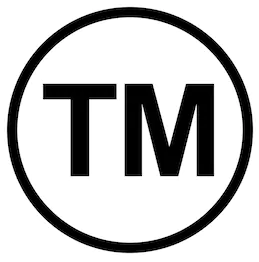Have you thought about trade marking your business? Here’s what you should know

Trade marks are all around us – the slanted tick on your sneakers; the apple on the back of your phone (sorry Android users); even the “Dun Dun” from Law & Order. Whilst these are all examples from multi-million-dollar companies, trade marks are not just for the big players. If you own a business, whether it be hairdressing, IT support, landscape gardening or anything in between – it may be worthwhile registering a trade mark to protect your business’ interests.
What is a trade mark?
A trade mark is a way of registering your ‘brand’, and distinguishing that brand from others. It can help customers identify who you are and promote goodwill for your business. As trade mark registration also grants you “exclusive rights” over your logo or whatever you have registered, and also offers protection to your business and brand.
We commonly register trade marks for words, phrases and logos, however trade marks can also be registered for numbers, letters, images, sounds, movements, shapes and even scents.
Once your trade mark is registered, you can use the ® symbol with your products/services.
Why should you register a trade mark?
There are a number of reasons why you may wish to register a trade mark, which include:
• Protection of your business: for example, the registration of business name means you have exclusive rights and no one else can trade under that name – in fact, there is no better way to protect the intellectual property in your business than through a trade mark;
• Marketing: assists in identifying/distinguishing your business; and
• Asset to business: you can license the use of your trade mark and/or sell/transfer your rights.
How can you trade mark your business?
Trade mark registration applications are completed online through ‘IP Australia’. IP Australia assess all applications and determine whether your trade mark is registerable or not – for example, if your trade mark closely resembles another trade mark your application will be rejected.
Before commencing your application, you must first pick the “classifications” and subsequent “items” relevant to your trade mark. Trade marks are separated into different classifications of “Goods” and “Services”. There are 45 classes of Goods and Services (34 classes of Goods and 11 classes of Services). Within each classification there are then multiple items (sometimes hundreds) which you can pick from depending on what is relevant to your trade mark. The items within each class are often wide ranging – for example, class 28 ranges from “accessories for dolls” to “yoga swings”!
We recommend getting advice before starting your application because:
• Some things cannot be registered – a trade mark must meet certain criteria including but not limited to whether it is capable of distinguishing your goods/services;
• We can conduct searches for other similar trade marks to make sure you won’t be infringing on another’s trade mark;
• We can provide you advice as to how many classifications you need for adequate protection; and
• Registration fees are non-refundable, so you want to do it right the first time.
If you need assistance in working out whether you have a viable trade mark and/or navigating the registration process, please contact a member of our commercial team on (08) 8212 1077.